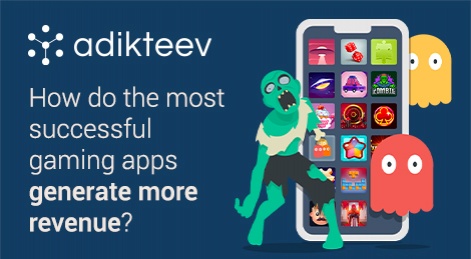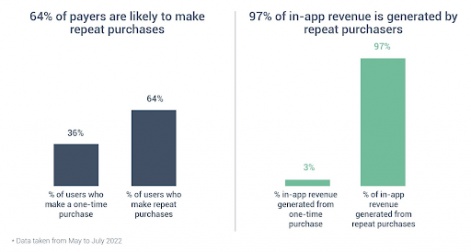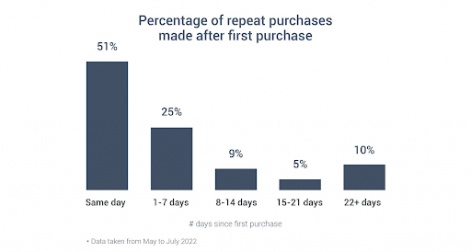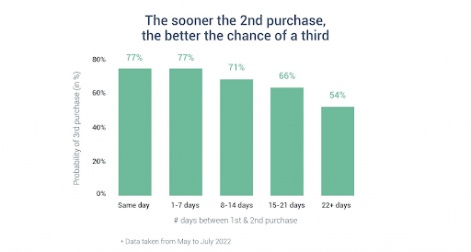New research from Adikteev delves into the mid-core and hardcore gaming market offering insight into maximising marketing strategies for game developers and publishers.
Hardcore and mid-core?
Hardcore games are defined as those that require a high investment from players, such as massively-multiplayer online role-playing games (MMORPGs), multiplayer online battle arenas (MOBAs), and first-person shooters. These genres thrive on player engagement, both in-game and outside of it, with hardcore players tending to be the most invested of all app users.

Mid-core titles require less investment, falling somewhere between casual games and their hardcore siblings. While they include elements common in hardcore gaming titles, mid-core games also feature simpler controls and tend to attract a larger and more varied audience, which is often less invested in the games.
The research notes a number of commonalities across both genres, with regard to key performance indicators (KPIs), performance measurement and retargeting strategies. As the majority of revenue comes from the most highly engaged paying users, those are the players the developers/publishers should be prioritising as targets.
Focus on the payers

The study shows that 64 percent of users make repeat purchases - with 97 percent of all in-app revenue generated by these users. By contrast, the 36 percent of gamers likely to make a single purchase generate only three percent of total revenue.
The report also makes the importance of repeat purchases very clear, stating: “…the majority of users who make a first purchase do make a second one and go on to become repeat payers.”
Two weeks notice!
Targeting players within the first fourteen days is key. Around 50 percent of repeat purchasers make their second in-app purchase on the same day as their first, with the figure declining to a low of five percent making one 15-21 days after the first, and 10 percent or lower after 22 days.

The report highlights a number of methods which can encourage the all-important repeat purchases, including push notifications, email and retargeting. It also notes that a hybrid or ‘multi-pronged’ approach is most likely to encourage players.
Creative strategies
To make the most of these users, Adikteev also offers a range of practical tips to help re-engage customers with smart creative retargeting strategies that work for apps regardless of vertical.
Keep your ads short, focused and targeted. New users will respond differently than those who have already played the game and where re-engagement is the target.
Know your audience! Understanding your players and what creatives work in different segments and markets, can increase retargeting efforts. Something as simple as a shift in colours or wording can help appeal to different consumers, and keeping up-to-date on trends and cultural expressions can drastically increase effectiveness.
Understand motivation. Again, demographics are a key to this, as is the user journey. Giving players solutions to their pain points can work wonders.
Measuring retargeting success
Without converting new users into returning players, the user acquisition budget is not working to its full potential
When working with Game Hive, Adikteev found that lapsed players were the most likely group to produce a high return on ad spend (ROAS). By targeting these users with ads highlighting in-game events, they were able to successfully target these users, resulting in a 648 percent increase in revenue year-on-year, a 465 percent year-on-year increase in in-app purchases, and a 300 percent increase in ROAS.
The report on hardcore and mid-core gaming apps also notes the importance of targeting and acquiring new installers - despite the lifetime value (LTV) potential of such gamers being unknown. With as many as 80 percent of new installers churning on day one, encouraging high-intent users to continuously use a game can help them maximise the LTV.
Without converting new users into returning players, the user acquisition budget is not working to its full potential. By targeting users early on: “app marketers can see which of these users will make a purchase, and which of them will continue making purchases in the future.”

The data indicate that early upselling has long-term benefits. Users that make a second purchase within 14 days are highly likely to go onto a third and become repeat purchasers. Users who made a second purchase between the same day as their first and seven days after their first were 77% more likely to make a third purchase. Users who made a second purchase between eight and 14 days after their first were 71% more likely to make a third, and between 15 and 21 days, they were 66% likely. After 22 days, the likelihood drops to 54% with it progressively getting lower over time.
Made to measure
Whatever strategy you adopt, proper measurement is essential if you are to succeed.
There are various key performance indicators (KPIs) to keep in mind when analysing a game’s performance. Attributed Return on Ad Spend (ROAS) and purchase Cost Per Action (CPA) are the most popular metrics as they’re easy to set up, optimise, and can provide the best estimation on the success of your campaign.
Attributed activations are closest to the main goal of retargeting, i.e. to bring users back into the app, but this is also a very frequent event (there’ll be more app opens than purchases).
Marketers need to be aware of the limitations of any metric. Attributed ROAS doesn’t account for incremental purchases, so whilst it’s great for showing immediate results of a campaign, it won’t be as good at illustrating the overall evolution of these retargeted users. Developers may want to run a separate incrementality test. Fortunately, there are multiple metrics that can be obtained from smart retargeting campaigns, so you can focus on uplift on opens, purchases or even purchase value.
Payers, lapsed players, and new installers are the most important groups to target
Build a better retargeting campaign
App marketers’ focus needs to be squarely on activating a core group of high LTV purchasers for mid-core and hardcore gaming apps. Since no two apps are the same, each will require a different strategy to reach its full monetisation potential. However, the research identifies some key points that all developers should note:
- Payers, lapsed players, and new installers are the most important groups to target
- New installers need to be activated early if there’s any chance to become high LTV payers
- It’s essential to encourage first- and second-time purchasers to make repeat purchases as quickly as possible
- When measuring performance, carefully consider your app goals before choosing the best KPIs
The chances of success can be increased by working with an experienced retargeting partner, who can develop custom strategies to promote your app and better analyse results. Adikteev offers a completely free pre-launch analysis to help app marketers have a better understanding of their audiences and objectives.
You can get in touch with Adikteev directly or read more of the company’s research here.





















